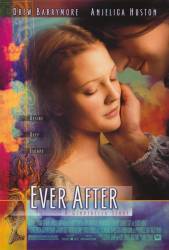Factual error: Leonardo da Vinci's painting, the Mona Lisa, was originally painted on wood, impossible for it to have been unrolled after taking it out of the canister. Also, if it hadn't been painted on wood, it would have been painted on canvas, which doesn't stay partially rolled after you take it out of a tube of some kind. It would not have been painted on paper. (00:23:55)
Factual error: Leonardo da Vinci came to France in 1516 by the King's invitation and died there in 1519. Prince Henry would have just been born around that time. He appears least 20 years old in this film.
Factual error: Chocolate started getting known in France in the 17th century, under Louis XIV. Since the movie takes place about a hundred years before that, Marguerite eating it is an anachronism. Even if she somehow got hold of some, at first chocolate was only a drink - it took a while longer before people started eating it.
Factual error: Gabriela, the Spanish bride, cannot speak Henry's language, as shown at their wedding. This would be unrealistic in such a time period. Noble young women were taught to converse in more than one language. They socialized and entertained noble guests from other places. While she may not have learned Henry's language as a child, she would definitely begin lessons after their parents agreed on the engagement.
Factual error: Danielle is hardly as common a name in French as in English, and relatively recent (a few hundred years at the most). The following information is taken from "L'histoire de nos prénoms : 2000 ans, 20 000 prénoms", by Léo Journiaux, published in 1999 by Hachette. Ever since the Middle Ages, the clergy had forbidden Frechmen to choose first names other than those of saints. In fact, the Council of Trente turned that clergy rule into law, which means since there was no St. Daniel or Ste. Danielle, Daniel and Danielle could not be bestowed on Catholic babies. You have to wait for the French Revolution (decree from March 24, 1793) for names other than saints' to be allowed in France. In the end, French parents had to wait for 1993 (this is not a typo) to be able to name their child whatever they wanted: before that, each baby's name had first to be approved by the civil registry administration. In fact, in 1970, a man from Dijon was denied the right to call his daughter Vanessa. Now, Danielle in the movie has to be a Catholic, or else Henry (being crown prince) wouldn't have been able to marry her. As a Catholic from the 1500s, she could not possibly have had a name that isn't a saint's name. Thus, calling her Danielle is an anachronism. Here is a rough translation of the "Daniel" entry in the abovementioned book. The entry for Danielle refers us to Daniel, in which is provided all the etymological information. "Daniel--masculine. Name in use in Europe since the 4th century A.D. The Protestant Reform allowed it to spread in Germany, but especially in England. In Scotland, where it's the translation for Donald, it was the 22nd most popular name for males in 1935. In France, it was first authorised by the law instated on April 1st, 1803.
Factual error: Thomas More's book Utopia was not published until 1516, the same year that Leonardo da Vinci was invited to the French court. Danielle's father could not have obtained a copy when he did.







Answer: There are two songs featured in the trailer: "Fable" by Robert Miles and "Mummer's Dance" by Loreena McKennitt.
Steph_Jared